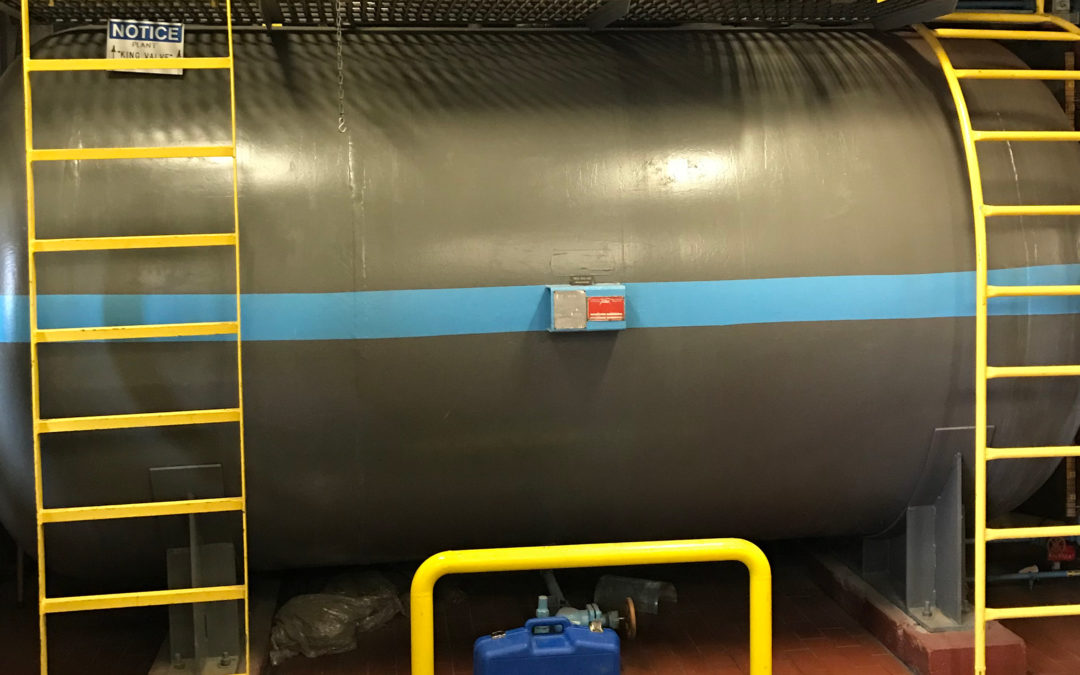A pressure vessel is a specially designed container that holds liquids, vapors, or gases at substantially high pressures. These vessels are often used in the petroleum refining and chemical processing industries, but can also be used in the private sector. The term pressure vessel applies to anything subjected to a notable amount of pressure and includes everything from massive industrial chemical storage tanks, to home hot water tanks, and individual diving cylinders such as scuba tanks, among other things. Some pressure vessels are exposed to external heat sources, either directly or indirectly, and are known as fired pressure vessels. Those not exposed to external heat are known as unfired pressure vessels. However, no matter the size, type, or use, safety regulation is a critical feature in the production and maintenance of a pressure vessel.
Pressure vessels are usually subjected to pressures of at least 15 psig, and often significantly higher, with many vessels exceeding 1000 psig. Because of this, the vessels must be designed to withstand intense internal pressure without failure, as failure could result in fatal or otherwise costly accidents, including poison gas leaks, fires, suffocations, and even shrapnel-generating explosions. Additionally, failure can cause massive loss of product and affect profits and a company’s ability to operate. In order to better withstand high pressure, coded pressure vessels are often spherical or cylindrical in nature with rounded edges to avoid focusing pressure at any one point. Many vessels are made of steel, and depending on the conditions in the area the vessel will be operating, some are made of composite materials or polymers.
Most pressure vessels are designed to include safety features. Smaller vessels are often created with a “yield before break” design, which allows them to bend or flex before any crack forms or grows in size. Larger vessels are often created with a “leak before burst” which allows for a crack in the vessel to grow and allow the contained substance to escape slowly rather than in one violent, explosive failure. While ideally, neither of these situations would occur, having a plan in place to mitigate damages in cases when they cannot be completely prevented is an invaluable safety tool.
Pressure vessels must be constructed and inspected in accordance with any applicable regulatory codes and standards. For the industrial sector, The American Society of Mechanical Engineers, ASME, publishes and maintains an International Boiler and Pressure Vessel Code that establishes acceptable margins of safety for this equipment. The ASME Section VIII documents explain in detail the guidelines recommended for ensuring safety. Another important code for ensuring the safety of pressure vessels is API 510, which is a code for the inspection, rating, repair, and alteration of in-service pressure vessels.
Encorus Group offers both design and inspection of pressure vessels. Contact Dana Pezzimenti, PE, for matters pertaining to pressure design at 716.592.3980, ext. 128 or [email protected]. If you have inspection needs for a pressure vessel, contact Keith Taylor, Encorus’s Director of Mechanical Integrity, at 716.592.3980, ext. 143 or [email protected].
A special thank you goes out to our summer intern, Mara Gilmartin, for contributing this article.


